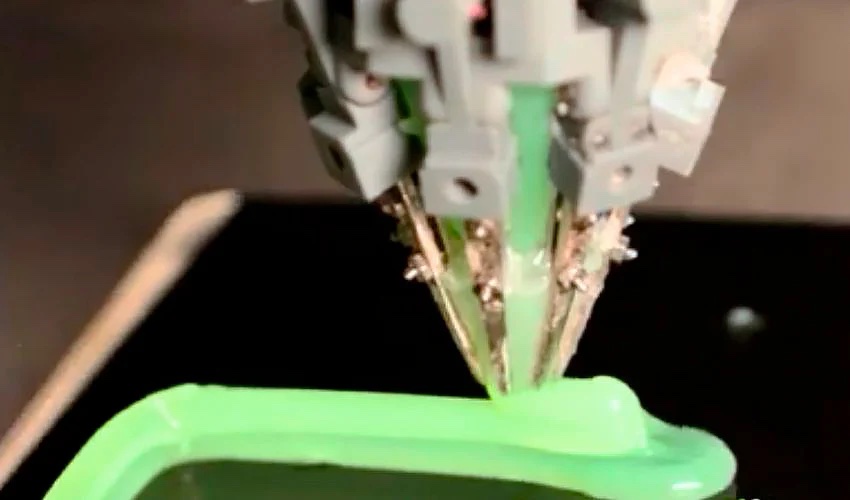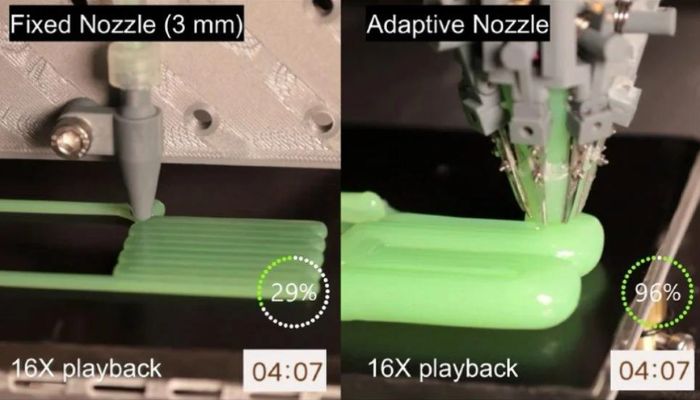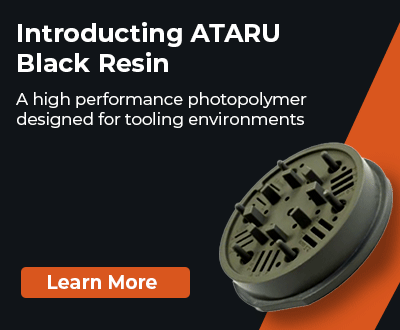An Adaptive Nozzle for Both Fast and Accurate 3D Printing From Johns Hopkins

When it comes to 3D printing, many users find themselves facing a choice of either a high resolution or a high speed. It is indeed challenging to reconcile both without compromising. Printing nozzles with a small diameter enable intricate details and precise prints, while larger nozzle diameters ensure fast printing results. A new approach could offer a solution so that in future you no longer have to choose between precise & slow and fast & sloppy. Jochen Müller and Seok Won Kang from the Whiting School of Engineering at Johns Hopkins University have developed an adaptive nozzle that can do both.
The two have developed a printing technique with a special adaptive nozzle called AN3DP – which can dynamically change its diameter and cross-sectional shape during printing. This makes it possible to print fast and detailed parts. It is also designed to avoid printing errors.

Photo Credits: John Hopkins University
Fixed nozzles often lead to over- or under-extrusion. This can lead to a stair-stepping effect, particularly with components that have both complex details and solid elements. The team’s main motivation was therefore to use an adaptive nozzle to improve the process and results in 3D printing.
The engineers were inspired in their approach by the mechanisms of retractable grabber tools and tendons in humans and animals. And as such, AN3DP has eight movable pins that are connected to each other by an elastic membrane. The pins are controlled by motors to change the shape and size of the nozzle, while the membrane ensures an even flow of material.
The combination of moving pins and elastic membrane is crucial for the production of precise and complex structures, which can also be manufactured quickly. In this way, the nozzle takes into account parameters that are often ignored with other variable nozzles. Variable nozzles are already available on the market, but although they can often change their diameter, they have no influence on the cross-sectional shape of the filament. It is therefore not possible to control the shape of the emerging material. AN3DP, on the other hand, is designed in such a way that both nozzle size and filament cross-section can be influenced.
In addition to the pins and the membrane, the preciseness and speed is also thanks to the conical inner design of the adaptive nozzle. Mueller, who is the study author and assistant professor in the Department of Civil and Systems Engineering at the Whiting School of Engineering, elaborates on the importance of the design: “Traditional 3D printers use fixed nozzles, which limit either resolution or speed. Smaller nozzles improve resolution but slow down printing, while larger nozzles increase speed but reduce detail. AN3DP’s design overcomes this by adjusting to the specific requirements of each feature being printed, allowing for both high resolution and faster printing”
Adaptive Nozzle Eliminates the “Minecraft Effect”
AN3DP can currently extrude all materials, including polymers, hydrogels, ceramics, metals, composite materials and even biological materials. It can withstand operating temperatures of over 200° C and is to be integrated into FFF systems in the future. The nozzle can help to significantly improve print quality.
“One of the major benefits of this adaptive nozzle is its ability to reduce the ‘stair-stepping’ effect,” explains Mueller. “This effect, reminiscent of the blocky figures in the popular game Minecraft, occurs when sloped or curved surfaces are printed using fixed nozzle sizes, resulting in a series of small, visible steps rather than a smooth surface. By adjusting the nozzle shape and size during the printing process, we can create smoother, continuous surfaces, enhancing the overall quality of printed objects.”
Although AN3DP offers solutions to two of the most persistent challenges in 3D printing – accuracy and speed – there is still room for improvement. The current weakness of the nozzle is that the design requires manual attachment and cleaning. In addition to this extra effort, the nozzle can only be used for a single manufacturing process as it stands.
Assistant Professor Müller and postdoctoral researcher Kang are now working on adapting the design to overcome these limitations and develop AN3DP into a viable solution. Their goal is to make AN3DP an attractive solution for everyday and industrial applications and to improve printing results in various fields. Applications can range from aerospace components and soft electronic devices to structural beams and walls. Müller is optimistic about the potential of AN3DP, concluding:
I’m really excited about AN3DP and its future applications. Its flexibility is going to improve the structural integrity and functionality of printed objects, making them more suitable for complex engineering applications.
You can find out more HERE. What do you think of the AN3DP adaptive nozzle? Let us know in a comment below or on our LinkedIn, Facebook, and Twitter pages! Don’t forget to sign up for our free weekly newsletter here for the latest 3D printing news straight to your inbox! You can also find all our videos on our YouTube channel.







